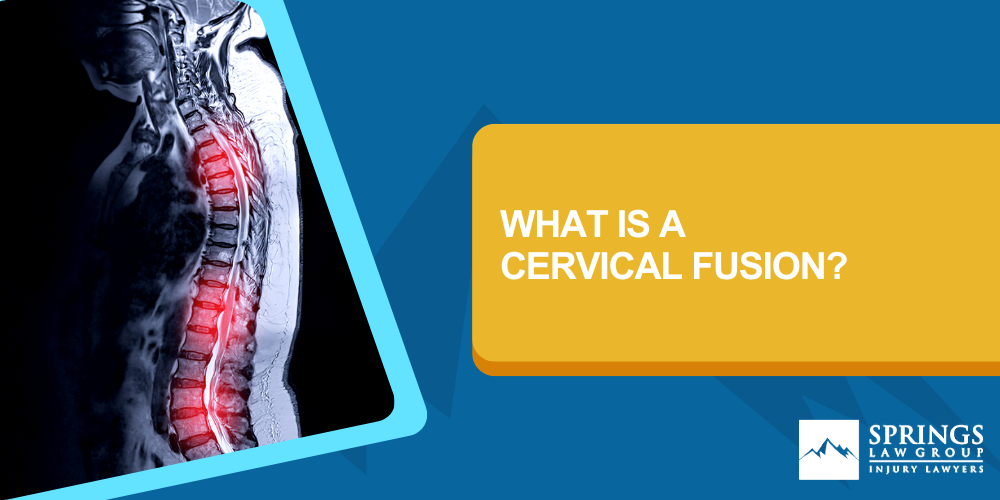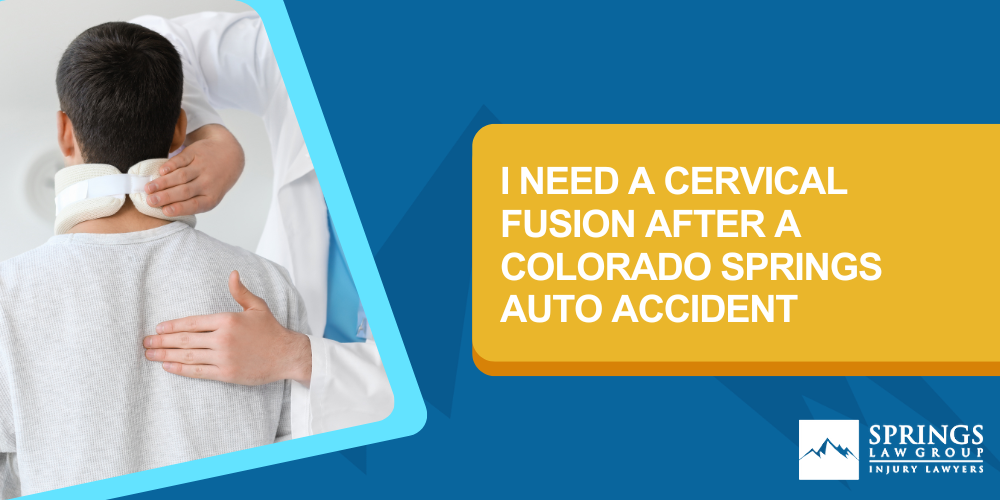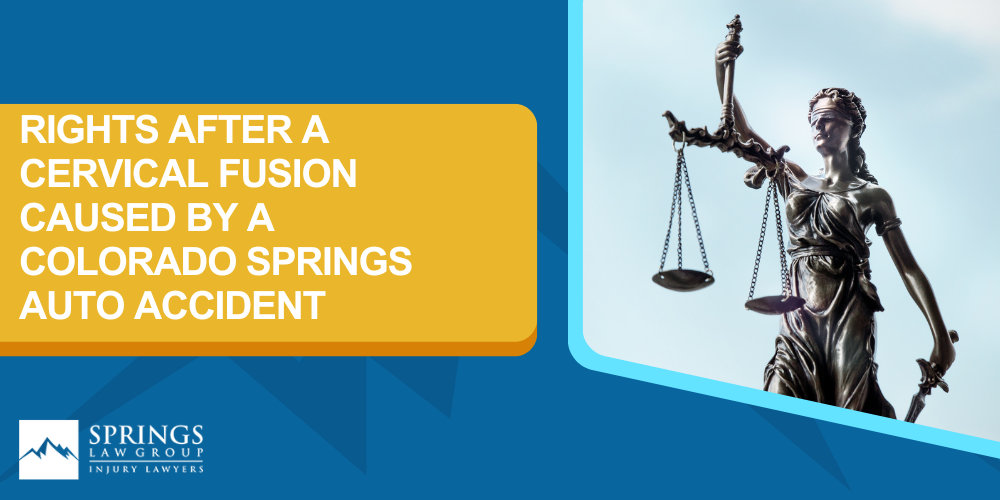I Need a Cervical Fusion After a Colorado Springs Auto Accident

The cervical spine, or the neck, is very vulnerable in a Colorado Springs auto accident. This is because the neck is more prone to “whiplash” effects caused by a collision. This is a violent back-and-forth motion that snaps the head in multiple directions. When this happens, the nerves, vessels, discs, vertebrae, and other structures can be easily injured. In extremely violent collisions with powerful whiplash, individual vertebra could become fractured or damaged and impinge on the spinal cord. This is a very dangerous condition that could result in paralysis from the neck down.
Victims of a Colorado Springs auto accident that have sustained a catastrophic neck injury may need to undergo a cervical fusion. This procedure is complex and not necessarily guaranteed to completely relieve all pain, but it will stabilize and protect the spinal cord. The procedure is painful and carries with it a prolonged recovery period, including the need for physical therapy, occupational therapy, and other treatment. Future surgeries may be required to further stabilize and abate pain that is caused as the body ages. Because of this, victims of auto accidents in Colorado may be entitled to compensation for their pain and suffering, medical bills, and future expenses. Call Springs Law Group to learn more about your rights to this compensation by dialing (719) 421-7141.
What is a Cervical Fusion?
A cervical fusion is a surgery in the neck that can be performed anteriorly (through the front of the neck) or posteriorly (back of the neck). The goal is to relieve nerve pain, stabilize the neck, or prevent damage to the spinal cord. There are two main parts of a cervical fusion that are all performed in one operation.
The first part is a discectomy and/or laminectomy. This is the removal of the disc between the vertebra, and/or the removal of parts of the lamina, which is back part of the vertebra. One purpose is to clean out the damaged structures of the neck that are most likely to be impinging on nerves, vessels, and spinal cord, and to prepare the neck’s bones for the next step. This process is known as “decompression,” and it relieves pressure on the nerves and spinal cord, which were causing debilitating pain.

The second part of the surgery is the fusion. Fusion is typically achieved by using either a bone graft (from a part of your body or a cadaver), surgical cement, metal, or other materials to “fill” the gap left by the removed disc. The goal of fusion is to create a bridge between the two vertebrae and protect the spinal cord. Once the “fill” is in place, metal rods, pins, plates, screws, and other hardware are used to hold the implant in place and to keep the two vertebrae in place. By keeping these structures in place, the neck can be stabilized and the spinal cord protected. The purpose of the fusion is to keep the vertebrae together to act as one, single vertebra. This reduces flexion and the risk of injury to the spinal cord or irritating the surrounding nerves.
Rights After a Cervical Fusion Caused by a Colorado Springs Auto Accident
Victims of an auto accident who require a cervical fusion may be entitled to compensation for their pain and suffering (past and future), medical bills, including future rehabilitation-related bills, lost wages, lost earnings, loss of services/affection, and other expenses related to the subject accident.

In order to be entitled to any of this compensation, a plaintiff will need to establish liability. This is known as “fault” for the subject accident. Generally in a car accident causing personal injuries, a plaintiff will need to demonstrate that the defendant causing the subject accident was “negligent.” This is a breach of the standard of care of a reasonably prudent person, meaning that the defendant did something that a reasonable person would not have done. Said differently, the defendant acted unreasonably in the use and operation of his or her vehicle. If this breach caused your personal injuries, such as the need for the cervical fusion, you may be able to recover compensation.
